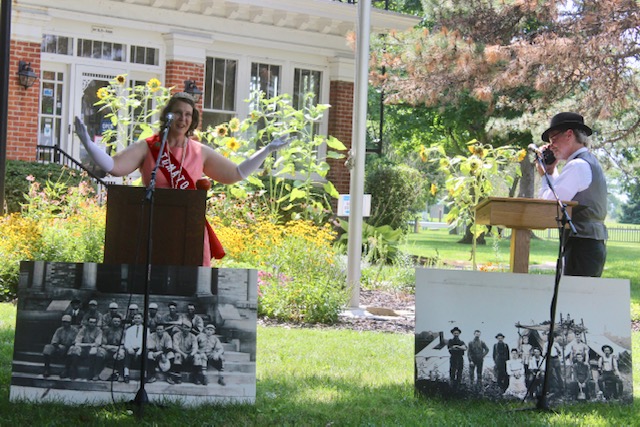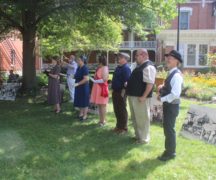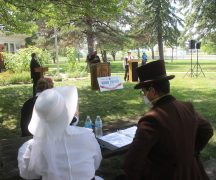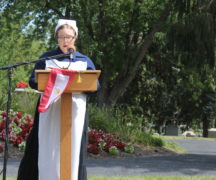By DAVID DUPONT
BG Independent News
At Living History Day held Sunday at the Wood County Museum a few of those portrayed in the People, Places and Things exhibit stepped out into the bright summer afternoon to share their stories.
Appropriately for a program inspired by photographs, a photographer served as the link between stories. James Walker, portrayed by Bob Midden, became a local professional photographer after early years of hard work on the farm that developed the muscle he used as a wrestler.
Midden after telling his story served as a link to the tales that followed. As in the previous other 17 Living History presentations, the people portrayed revealed the texture of life – the births and deaths, and the joys and sorrows that fill out the time between.
Alex Gagyi as Lucy Veler, the unofficial historian of South Church Street, talked of the comings and goings in her neighborhood.. She traced the history of the street back to Amherst Ordway who farmed in the area between Ordway and Pearl.
She recalled it as an idyllic place to be a child, a place where she and her friends constructed elaborate waterworks. There were youthful pranksters who posted on the school door that no classes were being held because of a coal shortage.
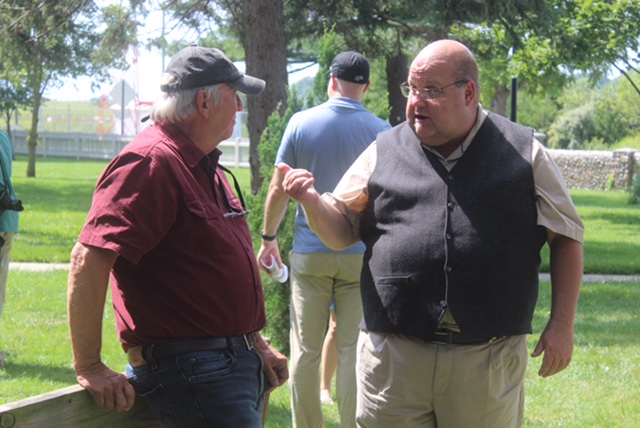
Dale David as Jerome Caulkins had plenty of school stories to share, including about having school shut down because of small pox. He was filling in for another teacher and had to argue with the school board to pay him for the two weeks he lost. He compromised and received one week’s pay.
Later he roomed with a family known for “being a little rough around the edges.” When heavy rains came and the house was surrounded by water, the father of the family carried Caulkins to the road so he could get to school for several days until the flood receded.
His career in education started early. Caulkins passed the initial teacher’s exam at 14, and at first opted to teach rather than go to high school. One year of teaching convinced him to return to high school. He graduated in two years and returned to the life of an itinerant educator. His final job was in Lemoyne teaching all eight grades with 52 students. He left teaching after that and took a job at the post office.
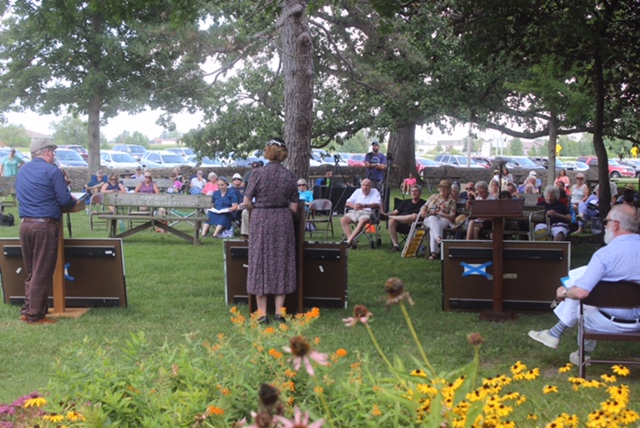
John and Addie Cain, portrayed by Heath Diehl and Deb Shaffer, were very much the proud parents sharing the stories of their six children. Addie was a widow when the couple married. Her first husband was Tom Custer, whose father and namesake died at the Battle of the Little Big Horn with his brothers George Armstrong and Boston Custer.
Though their youngest child Shirley had a prominent career in nursing and son Ralph was a well-known local photographer, it is their son Emerson who holds the closest place in the heart of the community heart.
In 1936, Emerson Cain, who his father called “a go-getter,” founded Cain’s Potato Chips in the family garage on Lehman Avenue in Bowling Green. The business started processing 2,000 pounds of potatoes daily and distributed their product within a 30-mile radius of Bowling Green. By the time Emerson Cain retired in 1963, the company processed 40,000 pounds of potatoes daily and distributed chips within a 90 mile radius of town
He coined the term “Marcelle” for a wavy, thick cut chip and invented a machine to more evenly salt the chip. “I told you he was a real go-getter,” his father said.
The juiciest part in the presentation went to museum director Kelli Kling who portrayed Ellen Jane Kramp Phillips, who had the distinction of being the first Tomato Queen of Wood County.
At the time the Heinz company was a major manufacturer in Bowling Green, filling the town with the aroma of cooking tomatoes.
Sometimes, Midden as James Walker noted, tomatoes would fall off the truck and become projectiles at the hands of youngsters.
In 1938 a tomato festival was held to celebrate the local product. Jane Kramp was crowned queen. In addition to four new outfits including a tweed traveling suit with raccoon trim, her winnings included a tour. Chaperoned by Minnibelle Conley, the society page editor at the Sentinel-Tribune, she traveled to the Heinz headquarters in Pittsburgh, and then on to Atlantic City where they were entertained by Miss America, Marilyn Meseke, who was from Ohio. The trip began with a send-off from the Cla-Zel, followed by one in Toledo. She received bouquets of roses at both venues. “It was like being in the Kentucky Derby.”
After a year of presiding over functions and being made an honorary colonel in the Ohio National Guard, Kramp’s life took the turn so well documented in Living History Day biographies. She went to work, as a beautician, married, and had children. “We raised our children and worked our jobs” and played golf. She retired as the director of the Wood County Board of Elections.
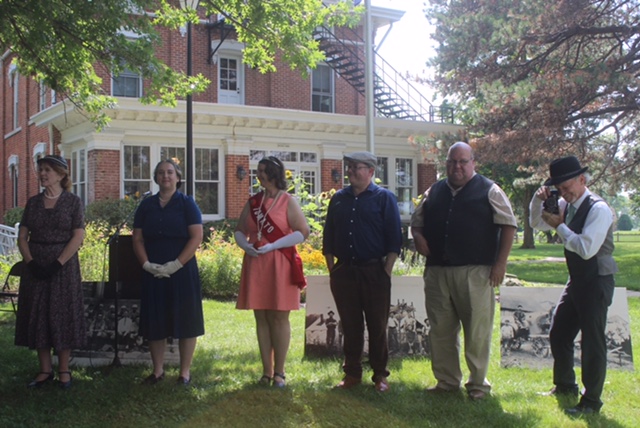
Virginia Aguirre, who succeeded her as queen, was the last to be crowned. The Heinz plant closed in 1940, and then burned down.
A piece of history gone, but thanks to the museum and Living History Days, not forgotten.

